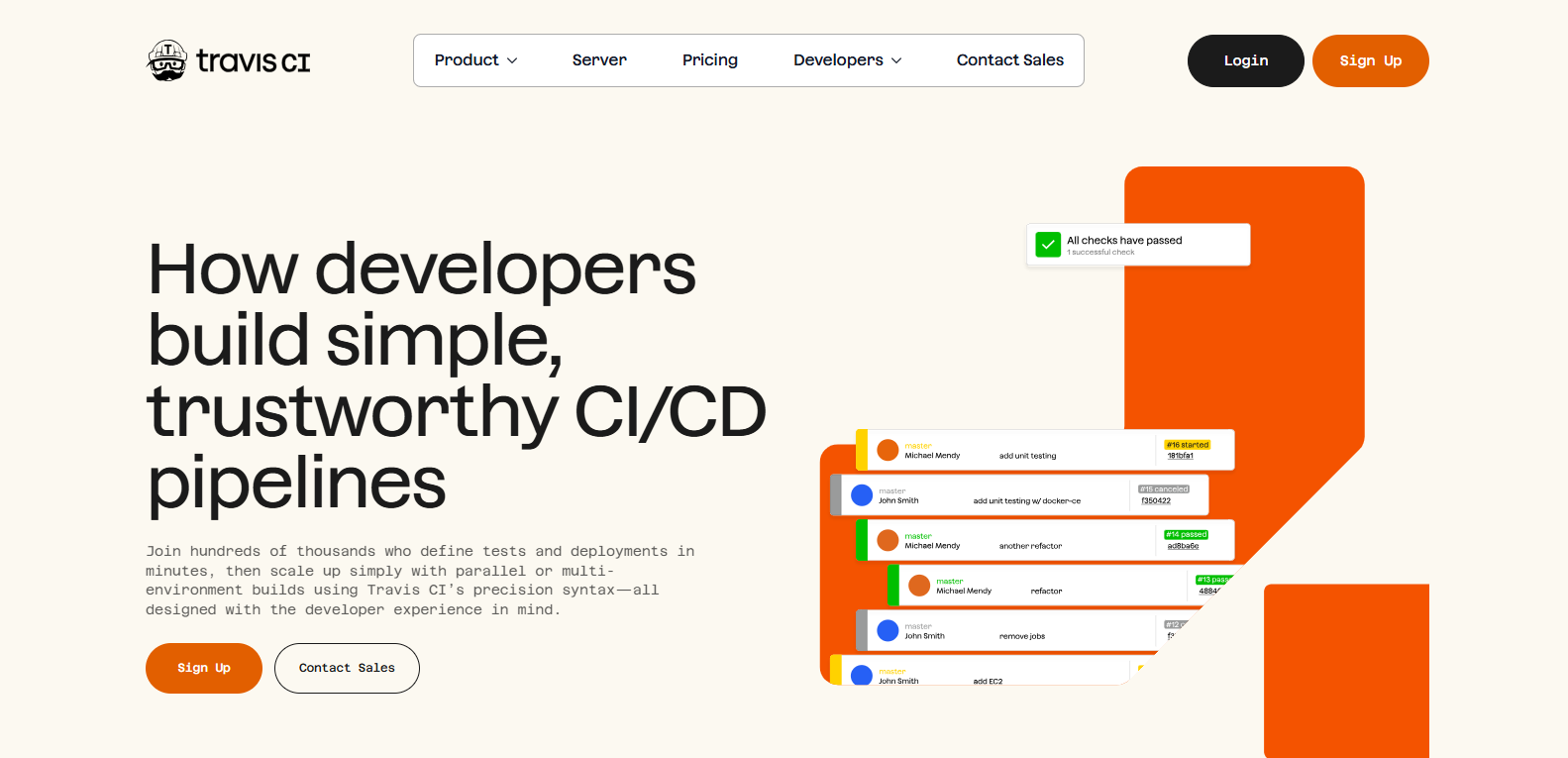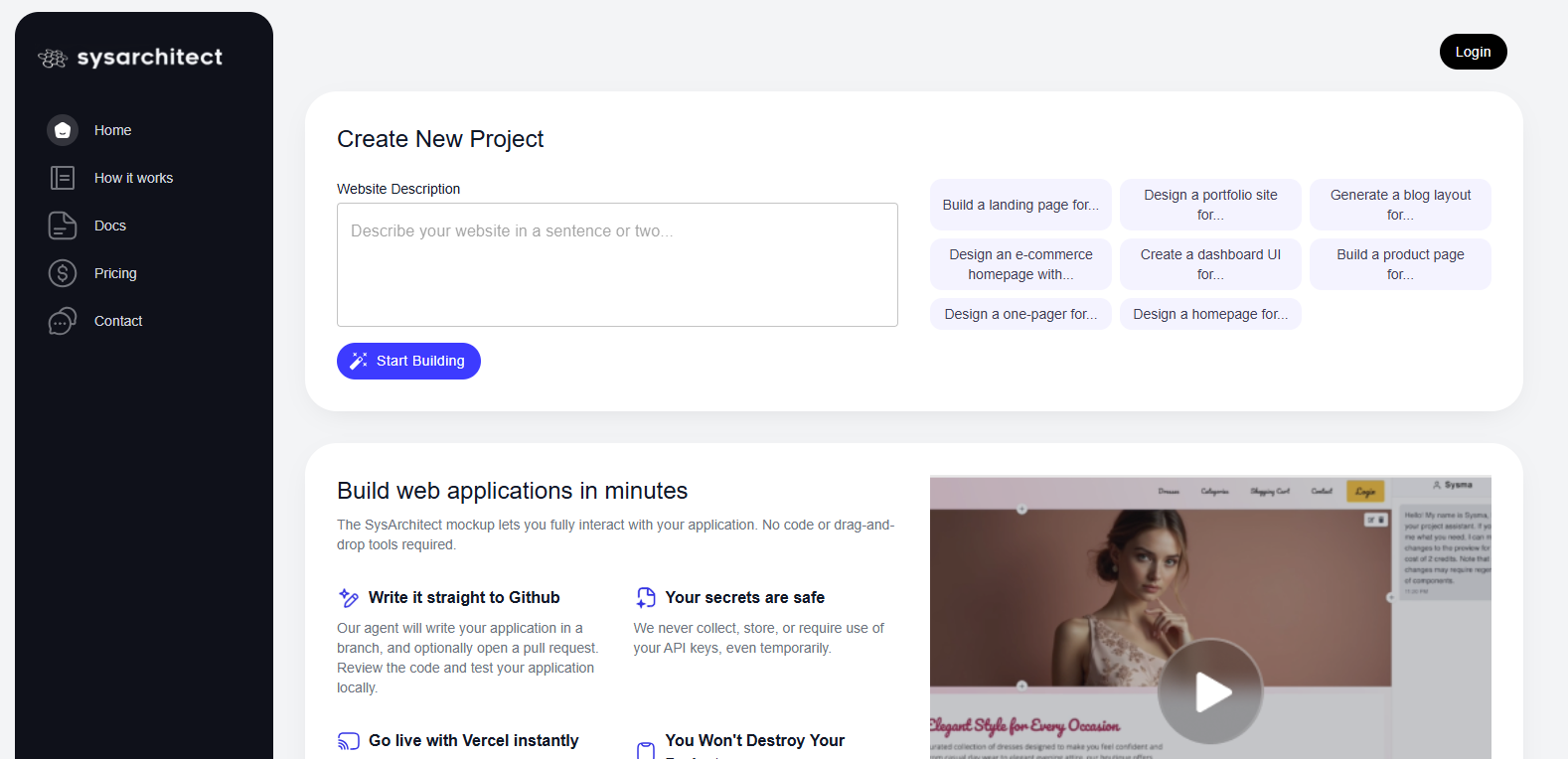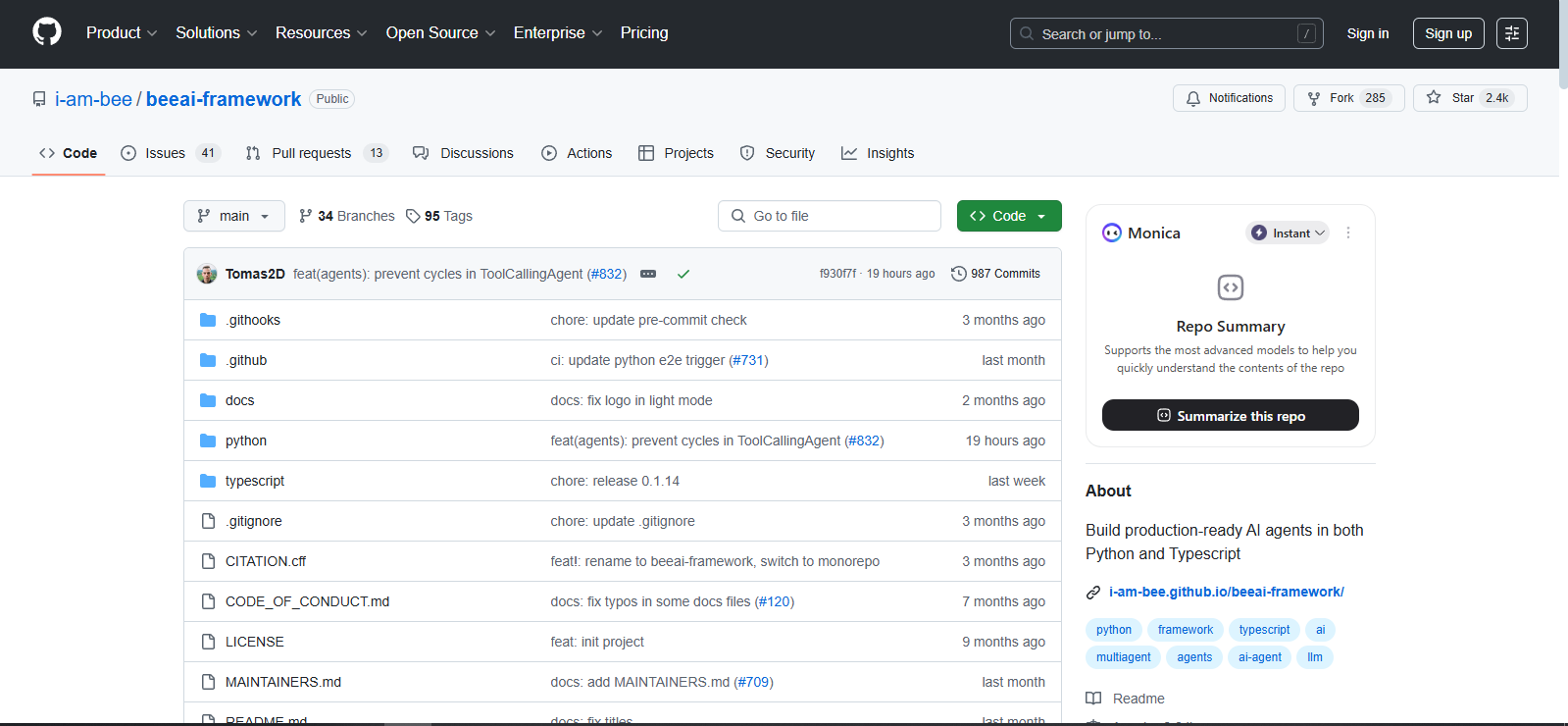Overall Value
Travis CI has been a go-to solution for continuous integration and delivery, helping developers run fast, consistent builds in the cloud. Its flexibility across multiple languages, streamlined deployment process, and out-of-the-box integration with GitHub and Bitbucket make it a trusted choice for solo developers, teams, and global enterprises alike.
Travis CI Product Review
Key Features
- Smart Build Matrix for parallel job execution across OS, environments, and versions
- Instant GitHub Integration for trigger-based CI/CD automation
- Language Flexibility: Supports 30+ languages including Go, Rust, Node.js, Java, and Python
- Encrypted Environment Variables to keep secrets secure during builds
- Custom Deployment Hooks for FTP, S3, Heroku, Docker, and more
- Build Insights Dashboard to track performance and bottlenecks in real-time
- Auto-Cancel Redundant Builds for faster feedback loops
- Docker-Ready Support to run containers natively in your pipeline
Use Cases
- Automate code testing and validation across branches before every merge
- Speed up deployments with predictable build automation and rollback support
- Streamline collaboration on large codebases with fast, consistent feedback
- Reduce manual QA effort through parallelized testing and automated reporting
- Secure your CI pipeline with encrypted secrets and access controls
Technical Overview
- Native GitHub and Bitbucket Integration
- Cloud-Hosted Runners for macOS, Linux, and Windows
- Support for YAML-Based Configuration
- Secure SSH Debugging for flaky test isolation
- Flexible Build Triggers via API, cron, or manual UI
- Compliance-ready with isolated environments and access restrictions
👉 Save Time, Avoid Merge Chaos, & Ship With Confidence
FAQs
Yes! With build matrix support and conditional job execution, it handles monorepos and microservices with ease.
Absolutely. You can define access controls at the org, repo, and branch level.
Travis CI offers language-specific and custom caching to avoid redundant installs and speed things up.
Yes, it works well with older stacks. You can configure custom environments tailored to your project.
While Travis CI is primarily cloud-based, enterprise users can request a self-hosted setup for compliance-sensitive projects.
Conclusion
Travis CI isn’t just a build tool, it’s your code’s best defense against bugs and deployment disasters. By automating your CI/CD pipeline, Travis helps you push cleaner code, ship faster, and work smarter. If you’re serious about code quality and team velocity, it’s time to build with Travis.










